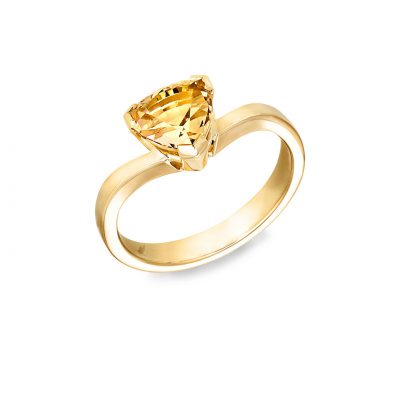
Moonstone
Origins: Sri Lanka, Myanmar, Madagascar, Brazil, Australia, India, Mexico, parts of Europe and the United States.
Birthstone: June
Of all the incredible gems – those displaying unique optical phenomena – moonstone is the most incredible. Moonstones can be described as translucent to transparent and the more transparent they are the more valuable they become. Neither prepares you for the celestial glow of a perfectly cut and polished transparent Moonstone with an aura of blue that seems to hover just above the pearly surface. One cannot help but think there is something enchanted about this gemstone.

Moonstones are nearly always cut into oval and circle-shaped smooth domes or cabochons as it best shows off the shimmering glow. The adularescence is usually stronger in one direction so the cutter needs great experience and skill to examine the gemstone carefully to determine which way to cut and polish the Moonstone.
Moonstones are rated at 6 – 6.5 on the Mohs Hardness scale meaning it is hard enough for most types of jewellery but care must be taken to ensure the stone does not get scratched In their uncut state, moonstones lack excitement and interest; the shimmer of the stone is not shown to advantage until the art and hand of the talented stone cutter has been brought to bear.

In Ancient Egyptian, Greek or Roman times, the glow from inside a Moonstone, the light or glow that catches a flash of colour, made them think this gemstone originated in the rays of the moon. It was associated with great goddesses of Ancient Greece and Rome, Diana, Selene and Artemis.
Rainbow moonstones are from the labradorite species of the group and are more commonly found. Labradorite Feldspar is most often associated with mining in Labrador, Canada, but Madagascar is a top source for rainbow moonstone which has a lighter or more transparent body colour than traditional Labradorite. Both traditional moonstone and rainbow moonstone’s adularescence is caused by light reflection of twinning planes. This layering causes an interference of light as it enters the stone, reflecting back as the sheen beloved in moonstones, making them appear to glow from within.

The traditional source of ancient Moonstones was the island of Sri Lanka where some of the most beautiful blue-hued moonstones are still found however a more surprising source of Moonstone has been Switzerland where some fine examples were mined in the area around Mt Adular. Adularia became a common name at the time for Moonstones from Switzerland and gave rise to the term ‘Adularescence’ for their pearly or iridescent appearance.
Other than the usual cutting and polishing to create an alluring gemstone, Moonstones are not enhanced or treated in any way as far as we are aware.
Shop Bespoke Jewellery
Special Unique Jewellery for Special People, look for your individual piece now.
For that important, memorable occasion, the ultimate gift is a one-of-a-kind Bespoke piece of Jewellery: a piece with special meaning and uniqueness, symbolising individuality.
You can also visit us in-store for a significant selection of stock for instant and immediate purchase.




